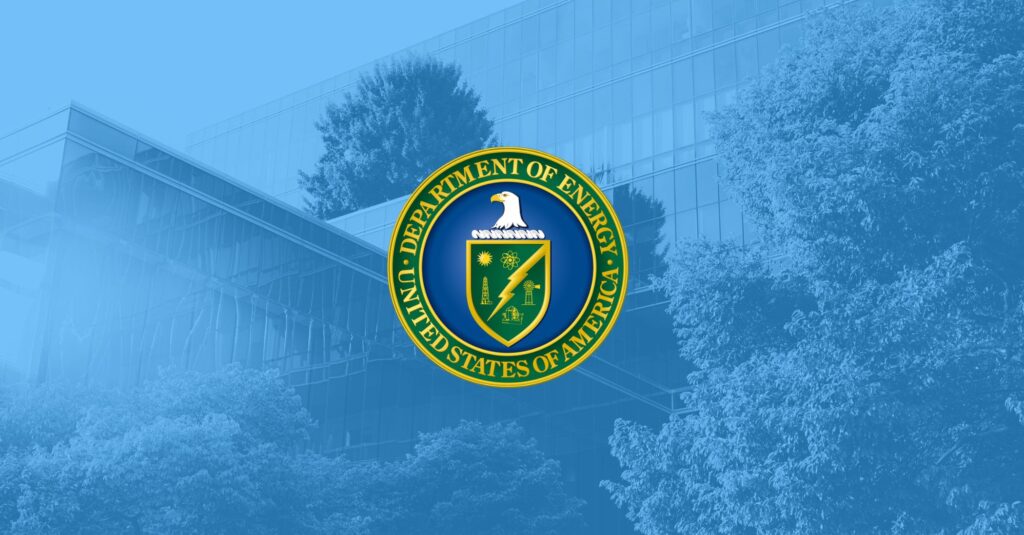The U.S. Department of Energy (DOE) has finalized part 1 of its definition of a Zero Emissions Building, setting a clear benchmark for the industry. This move aims to standardize what constitutes a zero-emissions building, providing consistent and measurable minimum criteria for sustainability goals and compliance. Part one of the definition covers operational emissions for existing residential and commercial buildings that are not federally owned. DOE has indicated that future iterations will aim to address embodied carbon as well.
Key Components of the Definition:
- Zero On-site Emissions: Buildings must produce no emissions on-site from energy use, requiring the elimination of fossil fuel-based energy sources.
- Complete Renewable or Clean Energy Integration: The sole use of renewable energy sources, such as solar or wind, is mandated to cover the building’s energy needs.
- Energy Efficiency: High energy efficiency standards are essential, with buildings required to minimize overall energy consumption.
- Lifecycle Considerations: The DOE emphasizes the importance of considering the entire lifecycle of the building, including construction, operation, and demolition.
Important to note:
- The definition applies to operational emissions from the whole building’s energy use, including emissions from tenants. Having to assess energy use and emissions at the whole building level may be a diversion from the typical emissions calculations protocol for many portfolios. The emissions from tenant spaces where tenants pay their own bills are considered Scope 3 emissions by some standards. In addition, many current corporate net-zero and science-based-targets (SBT) commitments only address Scopes 1 & 2. This can result in companies only including central systems and common areas in their portfolio emissions calculations, skewing the minimum thresholds they need to claim “net zero”. However, this new definition reduces the ability to cut corners when it comes to tenant data. Because it can be difficult for owners to collect tenant energy data, owners may need to consider new metering strategies, and expanding the use of green leases.
- While ‘net zero’ is a common term, the proposed definition does not include ‘net’ and does not allow any use of carbon offsets.
- This definition will be verifiable through ENERGY STAR Portfolio Manager for relative metrics like energy efficiency, which will simplify and streamline the calculation process for building owners.
- According to the DOE, several green building organizations plan to embed the definition within their certifications. Groups including the U.S. Green Building Council (USGBC) and the American Society of Heating, Refrigerating, and Air-Conditioning Engineers (ASHRAE) have applauded the new national definition.
- Regulatory Compliance: A unified federal net zero definition that defines an ultimate target and includes minimum efficiency requirements for both new and existing buildings will help to align jurisdictional policies, moving them towards the same targets over time. Building owners and developers will likely need to align their projects with this new definition to meet regulatory standards such as building performance standards that adopt this definition into their policy framework.
More About WatchWire
WatchWire by Tango is a market-leading, energy and sustainability data management platform that uses cloud-based software to collect, automize, and analyze utility, energy, and sustainability data metrics. WatchWire streamlines, automates, and standardizes your sustainability reporting process by integrating directly and/or providing reporting exports to ENERGY STAR Portfolio Manager, LEED Arc, GRESB, CDP, SASB, GRI, and more. The platform provides customizable dashboards, which allow asset managers, sustainability managers, engineers, and more to monitor individual key performance indicators (KPIs) and create custom views for specific use cases.
To learn more about WatchWire and its capabilities, you can visit our website, blog, or resource library, request a demo, or follow us on LinkedIn, Instagram, or Twitter to keep up-to-date on the latest energy and sustainability insights, news, and resources.
 Top Sustainability Trends to Watch in 2025
Top Sustainability Trends to Watch in 2025

 Log In
Log In









